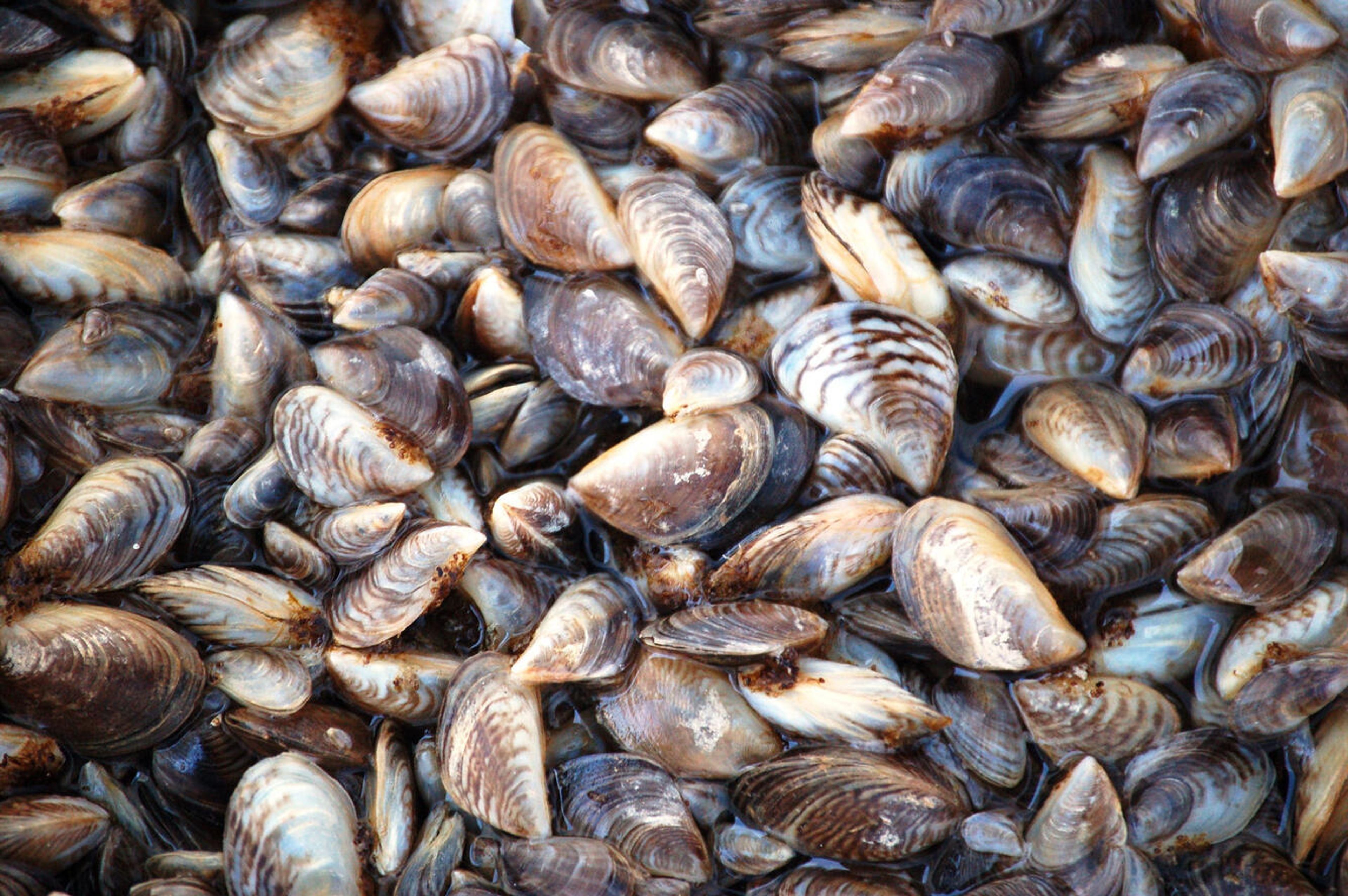Washington on guard for troublesome mussel found in Idaho last year
Quagga mussels can encrust dam infrastructure and clog water pipes, and threaten to cause millions of dollars’ worth of problems
Washington is upping efforts to keep an invasive freshwater mussel from gaining a shell-hold in the state’s rivers and lakes, using tactics ranging from DNA testing to shellfish-sniffing dogs.
Quagga mussels can cause major problems as layers of them crust over components of hydroelectric dams and locks, or clog drinking water or irrigation systems. Fisheries and fish ladders that allow salmon to bypass dams could be disrupted, too. The mussels can also outcompete native species, throw off water quality, and otherwise degrade ecosystems.
They were found last year in Idaho, stoking new worries about their threat to the region.
Washington’s Invasive Species Council cites estimates that it will cost $100 million annually to keep the state’s power and water infrastructure running if quagga mussels or non-native zebra mussels were to invade. That amount doesn’t factor in the cost of harm to habitat or fishing.
Even taking the potential problems for dams out of the equation, Justin Bush, aquatic invasive species policy coordinator at the state’s Department of Fish and Wildlife, said the mussels would have “a devastating, catastrophic impact to our environment and our economy.”
The Columbia River Basin for years has been the last major U.S. watershed free of the invasive mussels. But last September, Idaho officials said they’d detected quagga mussels near Twin Falls in the Snake River, which runs into the Columbia.
So what’s to be done in Washington? The Department of Fish and Wildlife has some new money to deal with the shellfish. The Legislature approved $1.81 million for the fiscal year that begins July 1 to combat invasive mussels and the Army Corps of Engineers is providing an equal sum, for a total of $3.6 million.
“We’re significantly increasing efforts,” Bush said this week during a meeting of the Invasive Species Council.
Monitoring for quagga mussels
The main way the mussels tend to spread is on recreational boats moved between bodies of water. When grown, they’re 1 to 2 inches and easy to spot but larvae, known as veligers, are microscopic.
Fish and Wildlife wants to fully staff watercraft inspection stations, Bush told the council.
The agency is turning to a variety of techniques to detect mussels in the water. These include measuring calcium levels (the bivalves rely on calcium to build their shells), using a grabber device to pull up and check material from lakebeds, and looking for traces of mussel DNA.
Bush said the department will also add a monitoring crew to three two-person crews it has had.
And he said the department is looking to bring on another mussel-sniffing dog. The dog would join Fin, a canine already doing this work. Puddles, a dog that had been part of the effort, is retired, Bush said.
More public outreach is also planned to remind people to clean, drain, and dry boats and other gear that’s been in the water and could spread the mussels.
It’s unclear if Idaho’s attempt last year to kill quagga mussels in the Snake River worked. The $3 million project involved treating a 16-mile stretch of the river with a copper-based chemical to kill the mussels. There was collateral damage as thousands of fish died, too.
Idaho Department of Agriculture Director Chanel Tewalt told state lawmakers that it was the largest operation of its kind ever attempted in the U.S.
Along with zebra mussels, quagga mussels were first documented in the U.S. in the 1980s in the Great Lakes, having made it there in the ballast water of ships. They’ve spread since.
In addition to detection and monitoring, Washington Fish and Wildlife officials are also preparing to respond if the mussels aren’t stopped and become a fixture in state waters.
“We’re planning for the very worst, but we’re hoping that Idaho was successful in eradicating this problem,” said Bush.









